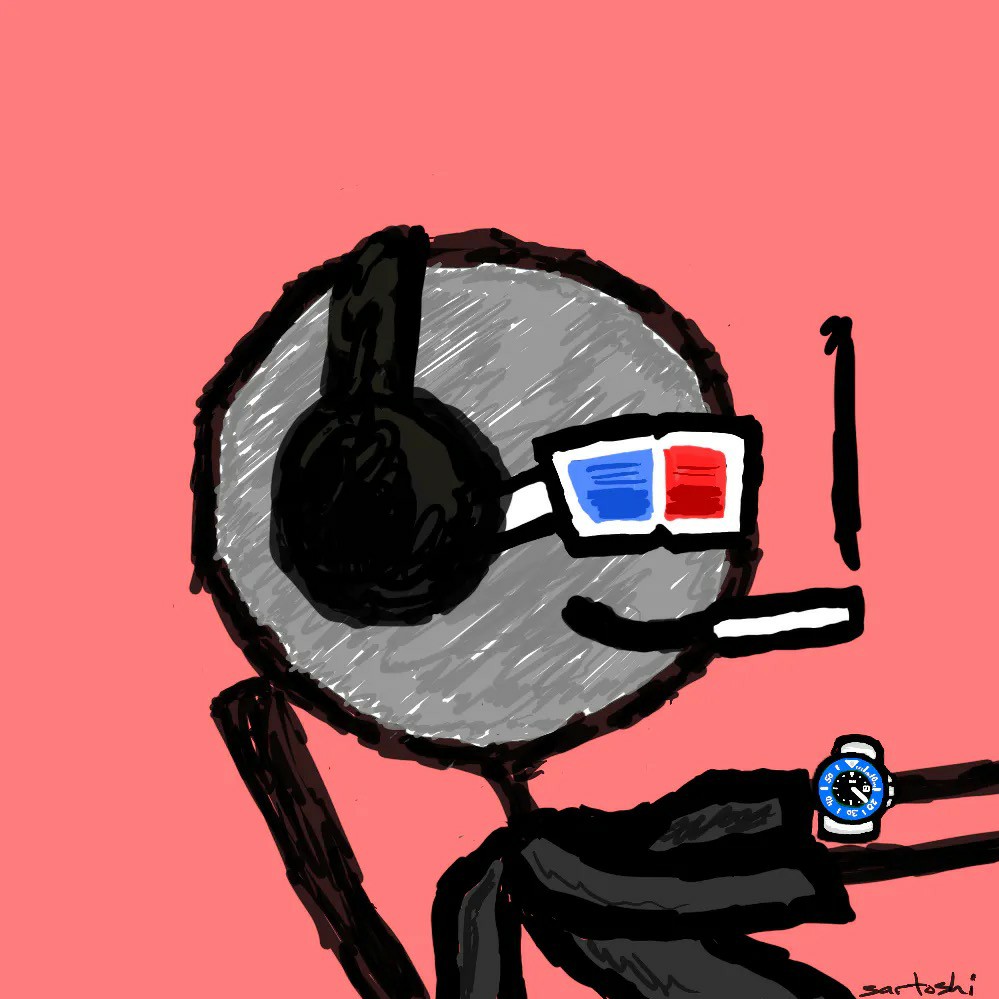Original | Odaily Planet Daily ( @OdailyChina )
Author: Azuma ( @azuma_eth )
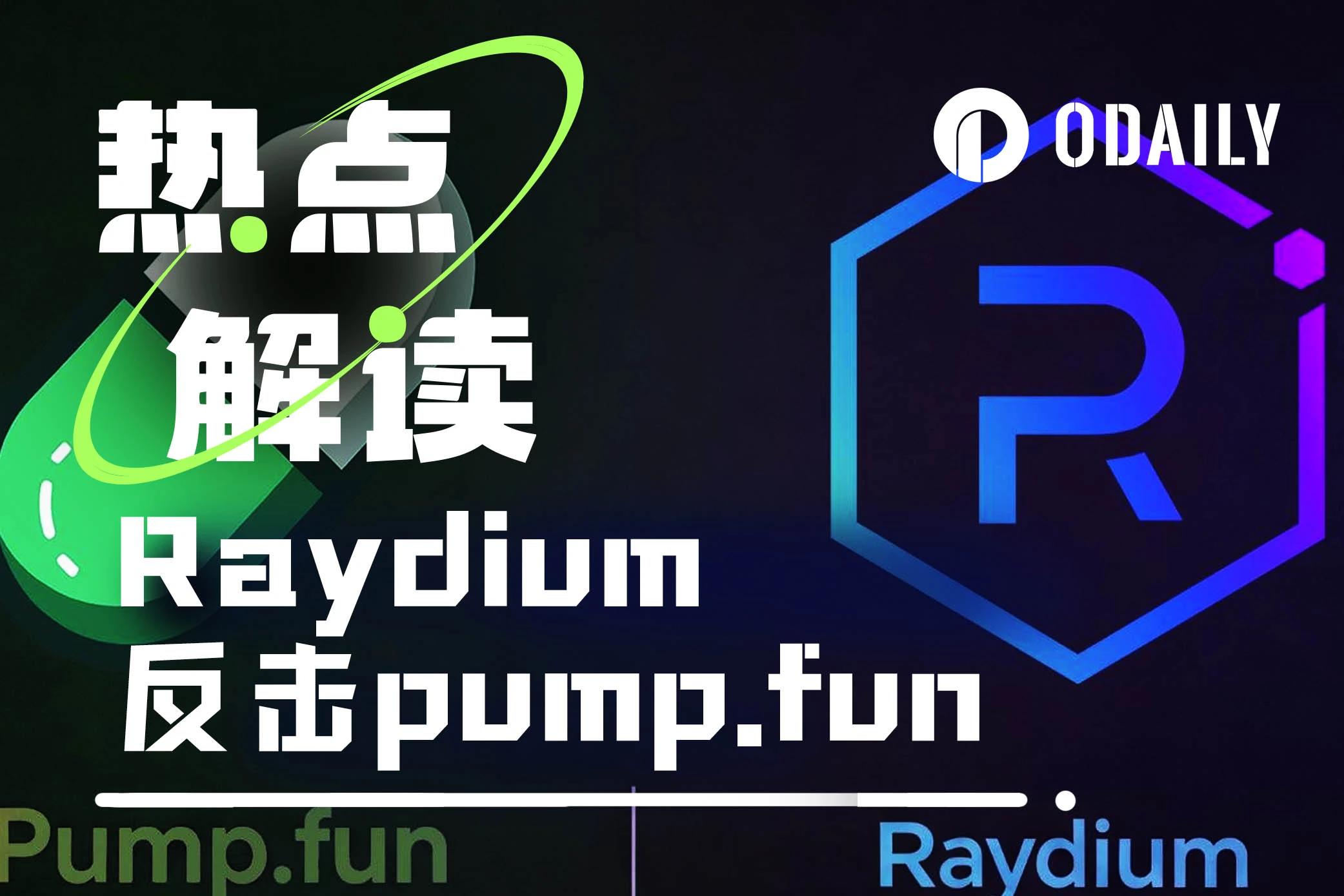
On April 16, Raydium officially announced that it has officially launched the token issuance platform LaunchLab, which allows users to quickly issue tokens through the platform and automatically migrate to Raydium AMM after the token liquidity reaches a certain scale (85 SOL). Obviously, this is Raydiums direct counterattack against the aggressive pump.fun .
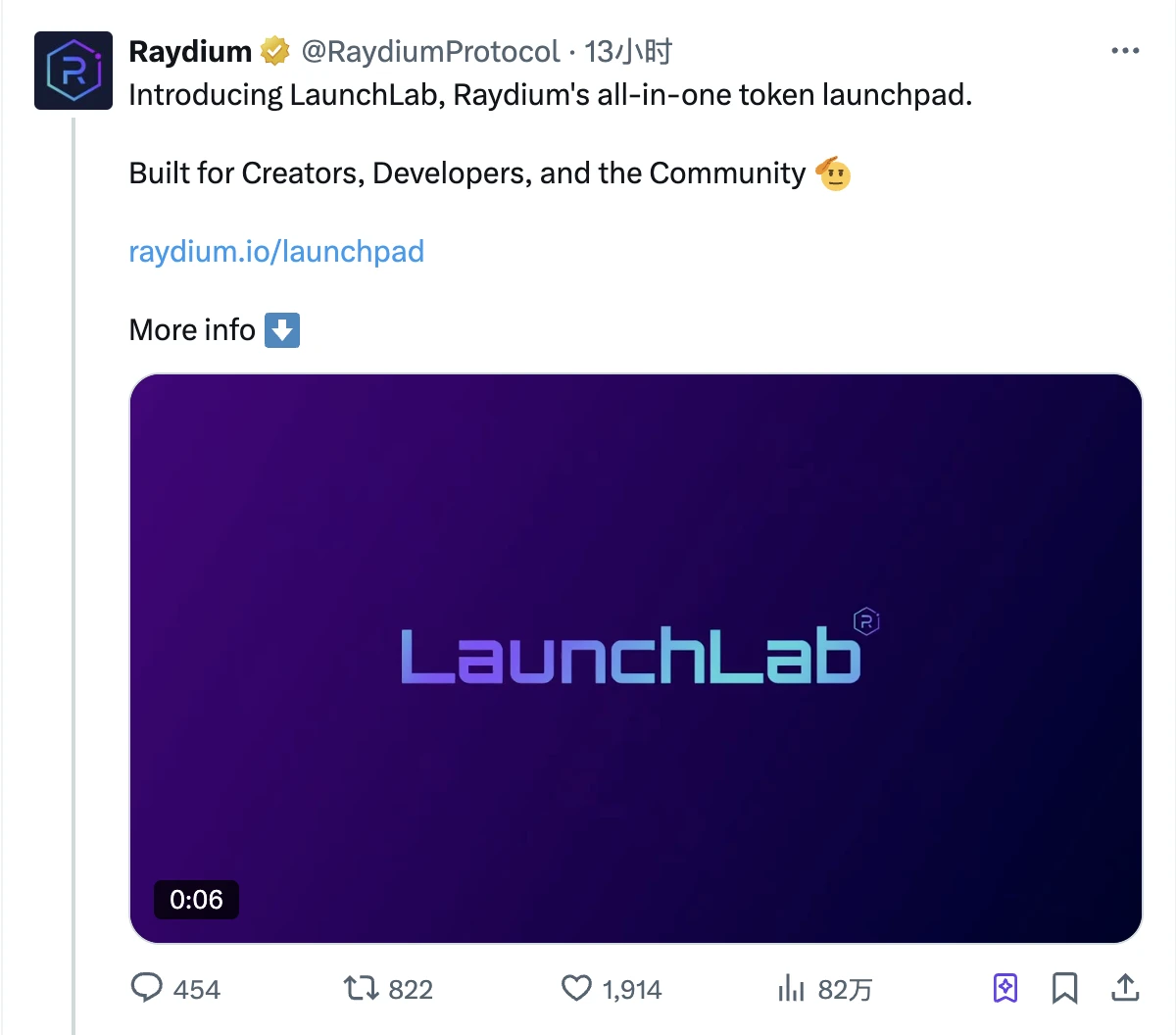
Raydium and pump.funs grudge game
The hostility between Raydium and pump.fun has not been long-standing. During the last meme outbreak cycle in the Solana ecosystem, the two sides were once considered allies.
In the early design of pump.fun, token issuance needs to go through two stages: internal market and external market. After the token is issued, it will first enter the internal market trading stage, which relies on the pump.fun protocols own Bonding Curve for matching. When the trading volume reaches US$69,000, it will enter the external market trading stage. At that time, liquidity will be migrated to Raydium, a pool will be established on the DEX and trading will continue to be open.
However, pump.fun announced the launch of its self-built AMM DEX product PumpSwap on March 21. From then on, when pump.fun tokens enter the external market, their liquidity will no longer be transferred to Raydium, but will be directed to PumpSwap. This move directly cuts off the flow of pump.fun to Raydium, thereby reducing the latters trading volume and fee income.
Odaily Note: We have made statistics in the article Data Analysis: How Much Does Raydium Depend on Pump.fun? The transaction volume of pump.fun tokens on Raydium accounts for approximately 20%.
Dune data shows that although it has been online for less than a month, PumpSwaps trading volume (the green part in the figure below) now accounts for about 15% of the market share of the Solana ecosystem . Although Raydium (the purple part in the figure below) still occupies the top position in market share, it is obviously under pressure.
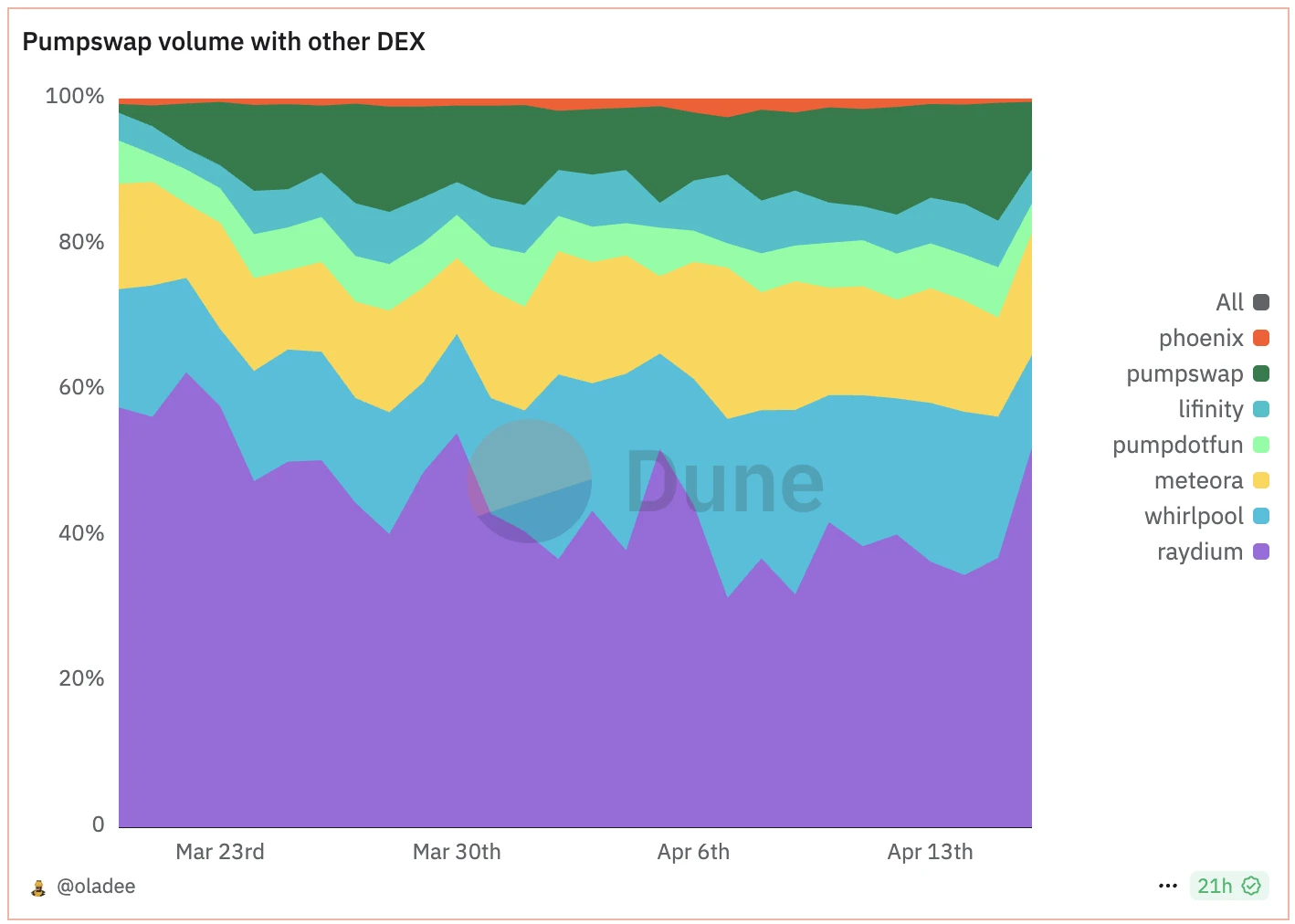
LaunchLab: Raydium strikes back
Seeing its territory being gradually eroded by pump.fun through PumpSwap, Raydium naturally did not want to sit idly by. The launch of LaunchLab can be seen as the beginning of Raydiums march towards pump.funs territory, and the competitive relationship between the two parties has further escalated since then.
Combined with LaunchLabs official documents, the platform provides a complete token issuance and liquidity cold start service. LaunchLab supports two token issuance modes - the JustSendit mode uses a streamlined, standard bonding curve setting; the LaunchLab mode allows the issuer to customize multiple parameters such as supply settings, total fundraising, distribution curve, unlocking status, etc.
Compared to pump.fun, the biggest feature of LaunchLab is that its architecture supports third-party integration, which enables external teams and platforms to create and manage their own launch environments within the LaunchLab ecosystem. In other words, third parties can rely on LaunchLabs underlying technology (the key point is that the liquidity pool remains in LaunchLab and Raydium) and launch independent token launch front ends.
Currently, the leading token of the entire LaunchLab ecosystem, TIME, is issued through the third-party launch platform cook.meme. This token is the first launched token of the entire LaunchLab ecosystem, with a market value of US$5.7 million. The first token launched through LaunchLab’s own UI is AURA, with a current market value of US$150,000.
Odaily Note: The market of meme tokens is highly volatile, so investors are advised to participate with caution.
Who will have the last laugh?
As the two key players in the current Solana ecosystem meme market, pump.fun and Raydium rule the token issuance side and the liquidity pool side respectively. Now both parties have extended their tentacles to each others territory.
In terms of the current competition, PumpSwap, with a market share of nearly 15%, has already hurt Raydium to a certain extent, while LaunchLab, which has only been online for one day, has not yet made a golden dog with enough influence, and has not shaken pump.funs position for the time being. However, this does not mean that pump.fun can declare victory, for the following three reasons.
First, on the first day of LaunchLabs launch, Raydiums share of trading volume has rebounded from around 34% to 60%, indicating that LaunchLab has attracted a certain amount of financial attention. Although it lacks representative tokens for the time being, this launch is not a failure.
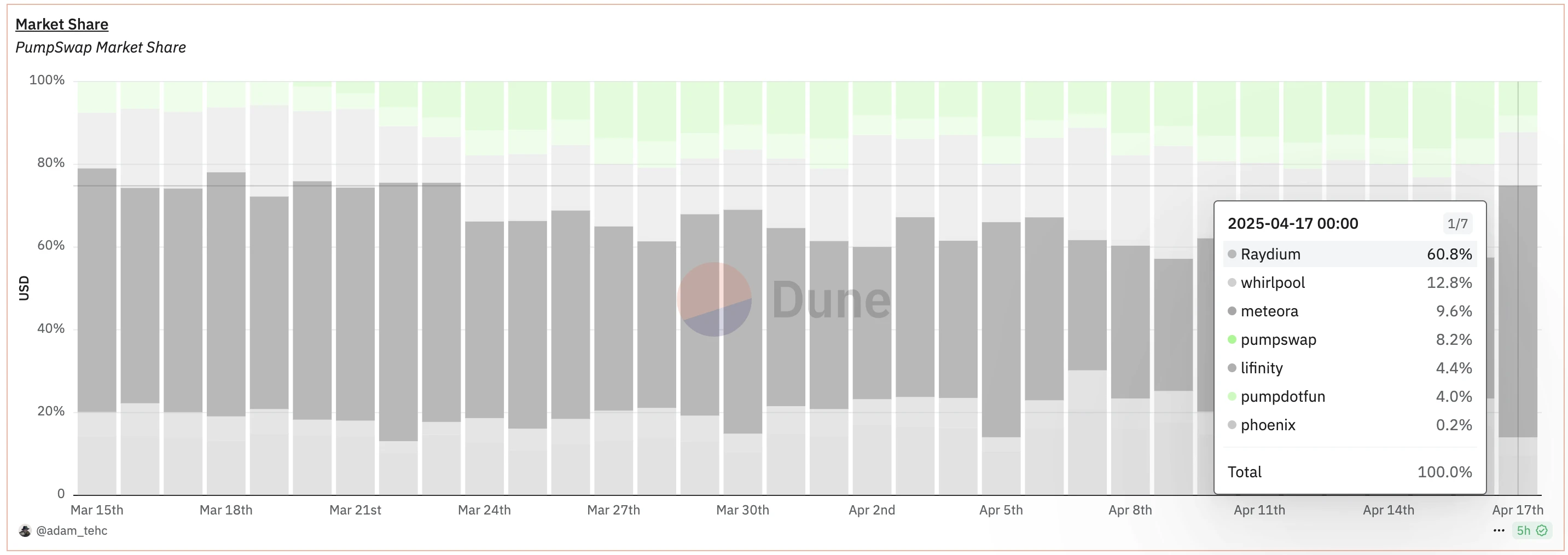
Secondly, compared to pump.fun, which “smash it as soon as it makes money”, Raydium, which is relatively more “orthodox” and has received direct investment from the Solana Foundation, will not be so embarrassing and may receive certain resources from the Solana Foundation in the future.
The third point is the most important reason. Currently, most user transactions in the meme market are completed through aggregated trading platforms such as GMGN. Whether it is pump.fun or Raydium, they do not often face users directly, and users perception of the back-end issuance platform and liquidity pool is not obvious. Although pump.fun is obviously in the lead in the integration progress of various platforms, for major platforms, they will inevitably add support for LaunchLab as soon as possible due to competition considerations. In this model, the wealth effect will be the key to determining user choices. In short, where the token can rise more, the funds will flow there.
Therefore , my personal conclusion is that pump.fun currently has certain advantages in attacking first, and at the same time, neither side has formed a sufficiently solid moat, so it remains to be seen who will have the last laugh.
In addition, it should be emphasized that the premise of all this depends on the overall environmental changes in the meme market . Looking back at the evolution of the relationship between pump.fun and Raydium, they were once in love when the meme market was in the incremental development stage in the early years, but as the track stalled and profits shrank, both parties consciously set their sights on the cake in each others bowl. At present, the meme market has a certain recovery trend, but it is still uncertain whether it can reproduce the grand occasion of the previous round. If the market environment turns cold again, the subsequent days of both parties may not be easy.

